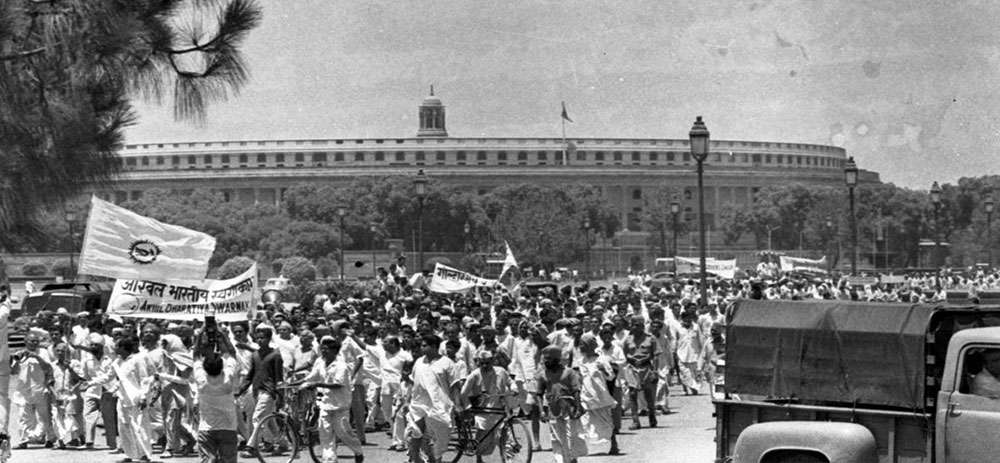Introduction
India, the world’s largest democracy, has undergone a remarkable journey since gaining independence from British rule in 1947. From its initial challenges as a newly independent nation to its current status as a global economic and political powerhouse, Indian democracy has evolved significantly over the decades. This transformation has been shaped by constitutional reforms, political shifts, socio-economic developments, and technological advancements.
This blog explores the evolution of Indian democracy from its inception to the present day, highlighting key milestones, challenges, and the way forward.
The Birth of Indian Democracy: 1947-1950
India’s democratic journey officially began on August 15, 1947, when it gained independence from British colonial rule. However, the country still needed a legal framework to govern itself. This led to the formation of the Constituent Assembly, which drafted the Indian Constitution under the leadership of Dr. B.R. Ambedkar.
On January 26, 1950, India adopted its Constitution, declaring itself a sovereign, socialist, secular, and democratic republic. The Constitution provided the foundation for a parliamentary system, guaranteeing fundamental rights, free elections, and an independent judiciary. The first general elections were held in 1951-52, marking the beginning of electoral democracy in India.
The Nehruvian Era: Laying the Foundations (1950s-1960s)
Under the leadership of Jawaharlal Nehru, India embarked on a path of nation-building, emphasizing democracy, secularism, and economic planning. The early years focused on institutional development, with the establishment of the Planning Commission, IITs, AIIMS, and various industrial projects.
Despite challenges such as linguistic reorganization (formation of states based on language in 1956), democracy remained stable. However, regional disparities, economic inequalities, and political instability in some areas started to emerge.
Emergency and Its Aftermath (1970s-1980s)
The most challenging period for Indian democracy came during 1975-1977, when Prime Minister Indira Gandhi declared a national emergency. Civil liberties were suspended, opposition leaders were jailed, and press freedom was curtailed. This authoritarian move led to widespread protests and, eventually, the fall of the government in 1977.
The post-emergency period saw the return of democratic norms, with the Janata Party forming the government. However, political instability persisted, leading to the return of Indira Gandhi in 1980. The decade also saw the rise of regional parties and increasing challenges from separatist movements, particularly in Punjab and Assam.
Economic Reforms and Coalition Politics (1990s-2000s)
The 1990s marked a major turning point with the introduction of economic liberalization under Prime Minister P.V. Narasimha Rao and Finance Minister Dr. Manmohan Singh. These reforms opened India’s economy to globalization, leading to rapid growth and development.
Politically, this era was defined by coalition governments, as no single party could secure a majority in Parliament. The rise of regional and caste-based parties reshaped India’s political landscape.
The BJP emerged as a major force, forming the government under Atal Bihari Vajpayee in 1998. His tenure saw economic progress, nuclear tests, and efforts to improve relations with Pakistan. However, coalition politics continued to dominate the era.
The 21st Century: A New Era of Governance (2010s-Present)
The 2014 general elections marked a significant shift in Indian democracy, with the BJP, under Narendra Modi, securing a decisive majority. This election saw the rise of strong leadership, digital campaigning, and populist politics. Modi’s government focused on economic growth, infrastructure development, and a digital transformation of governance.
In 2019, BJP retained power, emphasizing nationalism, economic reforms, and a strong foreign policy. However, challenges such as farmers’ protests, economic slowdowns, social tensions, and democratic concerns have emerged in recent years.
Challenges to Indian Democracy
Despite its success, Indian democracy faces several challenges:
- Electoral Reforms – Issues like money power, criminalization of politics, and low voter turnout remain concerns.
- Freedom of Speech – While democracy thrives on free expression, concerns over media censorship and internet shutdowns persist.
- Religious and Caste Divisions – Social harmony is sometimes disrupted by communalism and caste-based politics.
- Judicial Independence – The judiciary’s role in maintaining democracy is crucial, but debates over judicial overreach and executive interference continue.
- Economic Inequality – While India’s economy has grown, disparities between the rich and poor remain significant.
Federalism vs. Centralization – There are debates over the balance of power between the central and state governments, particularly regarding policies like GST and Article 370.
The Way Forward
To strengthen democracy, India must focus on:
Strengthening institutions – Ensuring free and fair elections, judicial independence, and robust media.
Political accountability – Transparency in governance, electoral finance reforms, and tackling corruption.
Inclusive growth – Policies that bridge the gap between different economic and social groups.
Leveraging technology – Using digital platforms for governance, education, and citizen participation.
Youth engagement – Encouraging young voters and leaders to participate in democratic processes.
Conclusion
The evolution of Indian democracy has been a journey of resilience, transformation, and progress. Despite challenges, India’s commitment to democracy remains strong. As the country moves forward, it must uphold the principles of justice, liberty, equality, and fraternity, ensuring that democracy continues to empower every citizen.
With its diverse population, vibrant political landscape, and ever-evolving governance, India’s democracy will continue to adapt, strengthening its position as a global democratic powerhouse.


